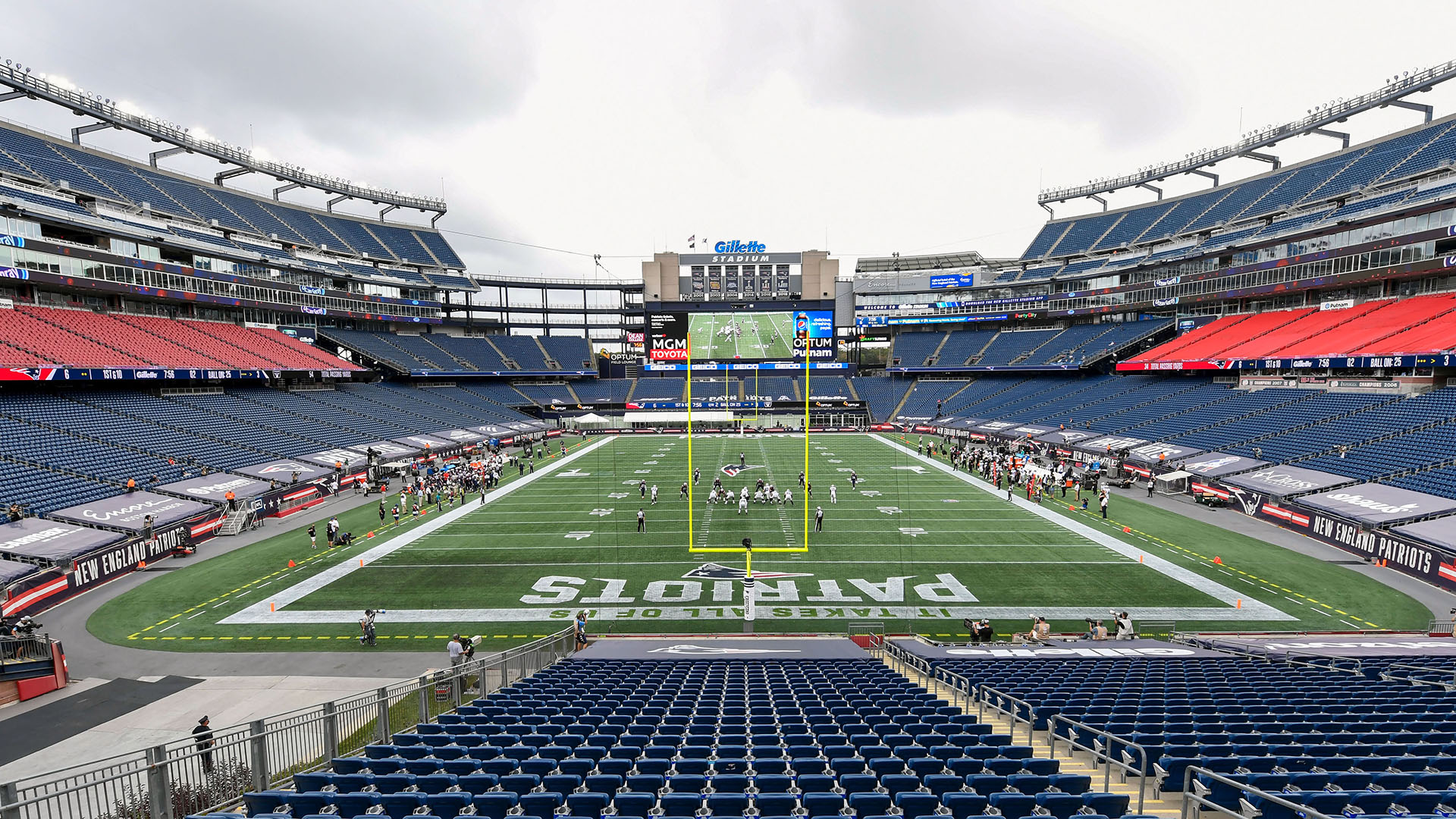Robert Kraft, owner of the New England Patriots, has been meeting with FIFA executives in the hopes of hosting a portion of the 2026 World Cup Games at Gillette Stadium.
Kraft hosted a meeting at Gillette Stadium last week with FIFA chief tournament and events officer Colin Smith, FIFA vice president and CONCACAF president Victor Montagliani, and Brian Bilello, president of the Revolution and Boston Soccer 2026, to discuss the possibility of hosting six matches of the 2026 FIFA World Cup Games at Gillette Stadium.
“We look forward to hosting, hopefully, six games here and the quarterfinals like we did back in ‘94 when we had Italy versus Spain,” Kraft said during an on-field press conference.
Kraft appeared jovial at the event and apparently stuck up a friendly rapport with Montagliani, who noted, “Robert was already doing his job before he walked up here — ‘We need six games, we need this, we need that.”
“I know what happens in America with American football and how we build a sense of community, but I think the sport of soccer does that globally like nothing else, Kraft stated. “I think half of the world’s population watches at least part of the World Cup. It is so powerful it brings communities together.”
Montagliani also commented in Spanish that Gillette is “a strong candidate,” although modifications would have to be made at the stadium to accommodate the World Cup games.
“We play the World Cup on natural grass and we have a standard pitch size that we use for international games,” explained Smith. “We need a bit more space around that, given the scale of World Cup matches with photographers, cameras, security.
“Players playing in the World Cup are the best players in the world. And one of the fundamental requirements for us, as FIFA, is the pitch, is to ensure they have the conditions they need, inside the stadiums and also all the training sites, in order to perform at their highest level.”
Kraft has submitted a proposed plan to FIFA officials. Modifications at Gillette, according to stadium officials, would include ripping out the existing synthetic turf, reactivating the irrigation system that has been long dormant, and restore natural turf. Additionally, some sideline seating would need to be eliminated in order to comply with field-width requirements. Although infrastructure modifications will be costly, Kraft believes they can be justified by the projected revenues that the event will bring, as well as the global exposure and prestige, as an household viewers around the world average in the hundreds of millions per World Cup game.
Back in 1994 when he acquired the Patriots, Kraft had a natural turf surface installed at Foxboro Stadium in the hopes of attracting World Cup games that year. The investment paid off handsomely, as over 324,000 fans attended World Cup games that year at Foxboro Stadium. Some of the highlights of that 1994 World Cup include two victories for Italy – one against Nigeria in the second round, and one against Spain in the quarterfinals – as well as two victoris for Argentina, including Diego Maradona’s final international appearance prior to his suspension after testing positive for a banned substance.
Kraft’s proposal is to perform modifications at Gillette similar to those made at Foxboro in 1994 if Gillette’s bid is approved. The plan includes hosting six World Cup matches, including four group-stage games, and two elimination contests, just as Foxboro did during the 1994 World Cup.
For the first time in its history since the Cup was first contested in Uruguay in 1930, the 2026 FIFA World Cup will be played across three countries: Canada, Mexico and the United States. Participation will also be expanded to include 48 teams, which represents double the number of teams participating in the 1994 World Cup. A total of 80 games will take place at 16 venues in Edmonton and Toronto, Canada; Guadalajara, Mexico City, and Monterrey, Mexico; and 11 U.S. cities that are yet to be determined.
Among the 17 US stadiums contending for a spot on the final list of 11, Gillette is considered a strong favorite, in part thanks to Kraft’s position as honorary chair of the 2026 World Cup United Bid Group. FIFA officials began their nine-city U.S. tour at Gillette Stadium Wednesday morning as they set about visiting the 17 stadiums on their list of candidates.
While many of the U.S. stadiums currently being considered are newer than Gillette, which opened almost 20 years ago in 2002, but some of those might have to make more structural modifications than Gillette in order to comply with field-width requirements. Since those modifications will reduce seating capacity, stadium officials are hoping that FIFA officials will be willing to strike a compromise with regard to required dimensions.
Of the 17 venues under consideration in the U.S., naturally the top candidates are the four with the largest capacity, which are also being considered to host the final. These include Dallas (AT&T), Los Angeles (Rose Bowl), New York (MetLife), and Washington, D.C. (FedEx). Those four hosted games in 1994, as did Boston/Foxborough, Orlando, and San Francisco.
Other stadiums in the U.S. currently on the contenders’ list for 2026 include Atlanta (Mercedes-Benz), Baltimore (M&T Bank), Cincinnati (Paul Brown), Denver (Empower), Houston (NRG), Kansas City (Arrowhead), Miami (Hard Rock), Nashville (Nissan), Philadelphia (Lincoln Financial), and Seattle (Lumen).
Kraft maintains an optimistic outlook and has high hopes that Gillette’s bid to host those six games will be approved, and the 2026 World Cup will come to New England. To express his conviction that the bid will indeed be approved, he concluded the press conference at Gillette on Wednesday with the comment, “We look forward to the World Cup in 2026 coming right here to Gillette Stadium.”



